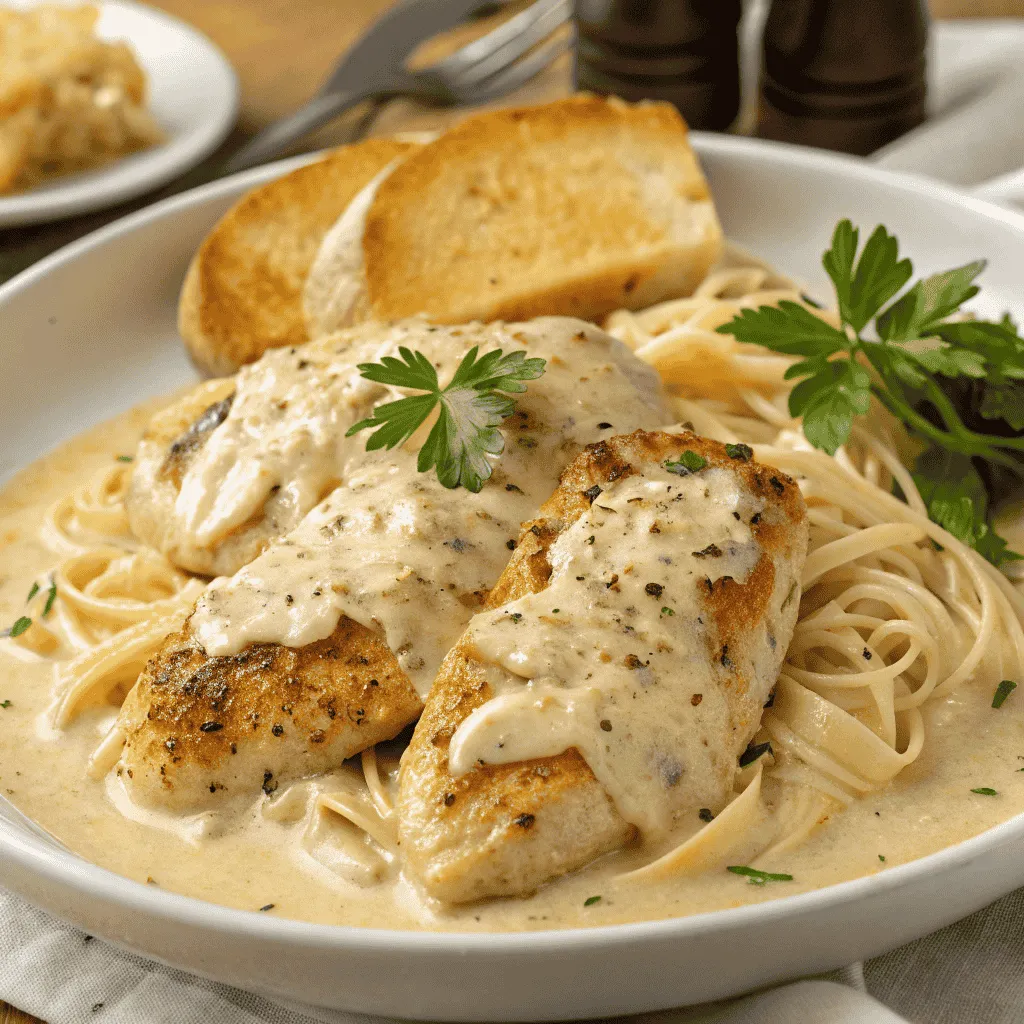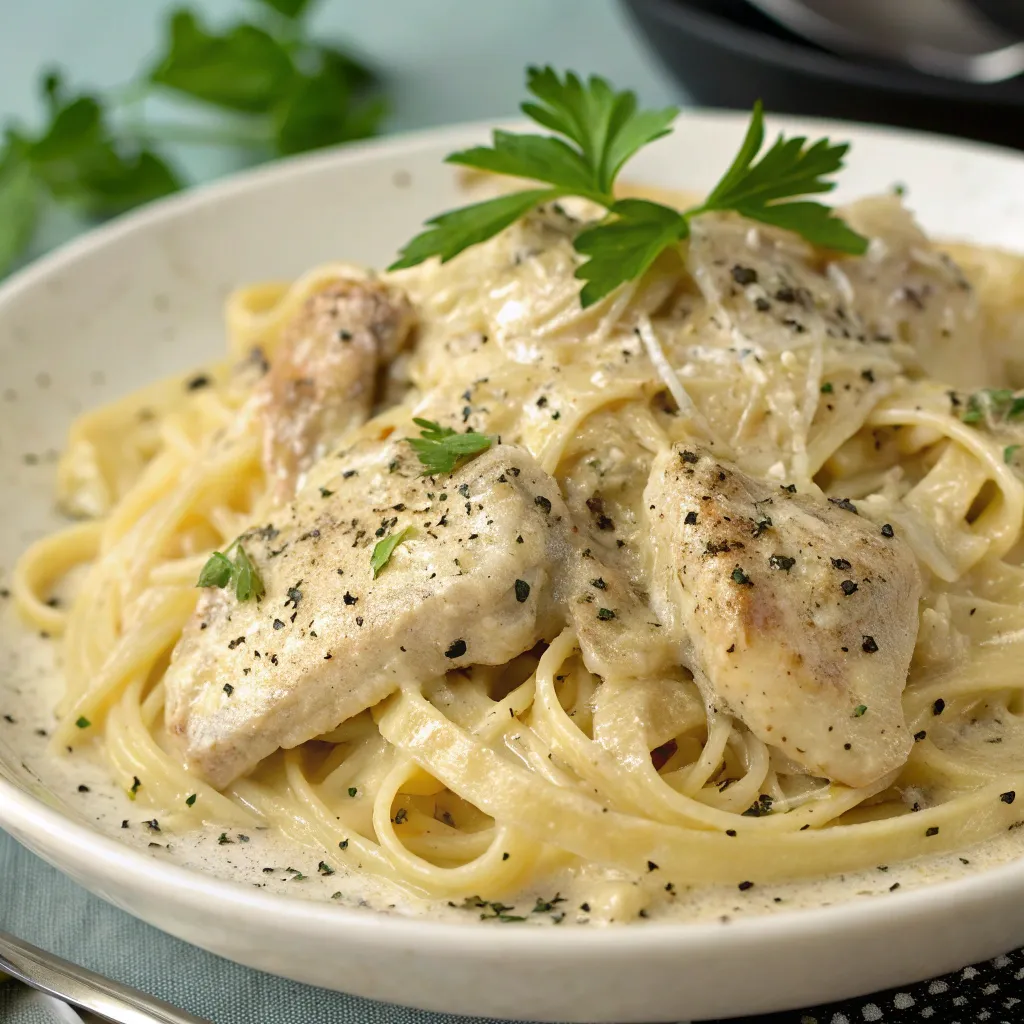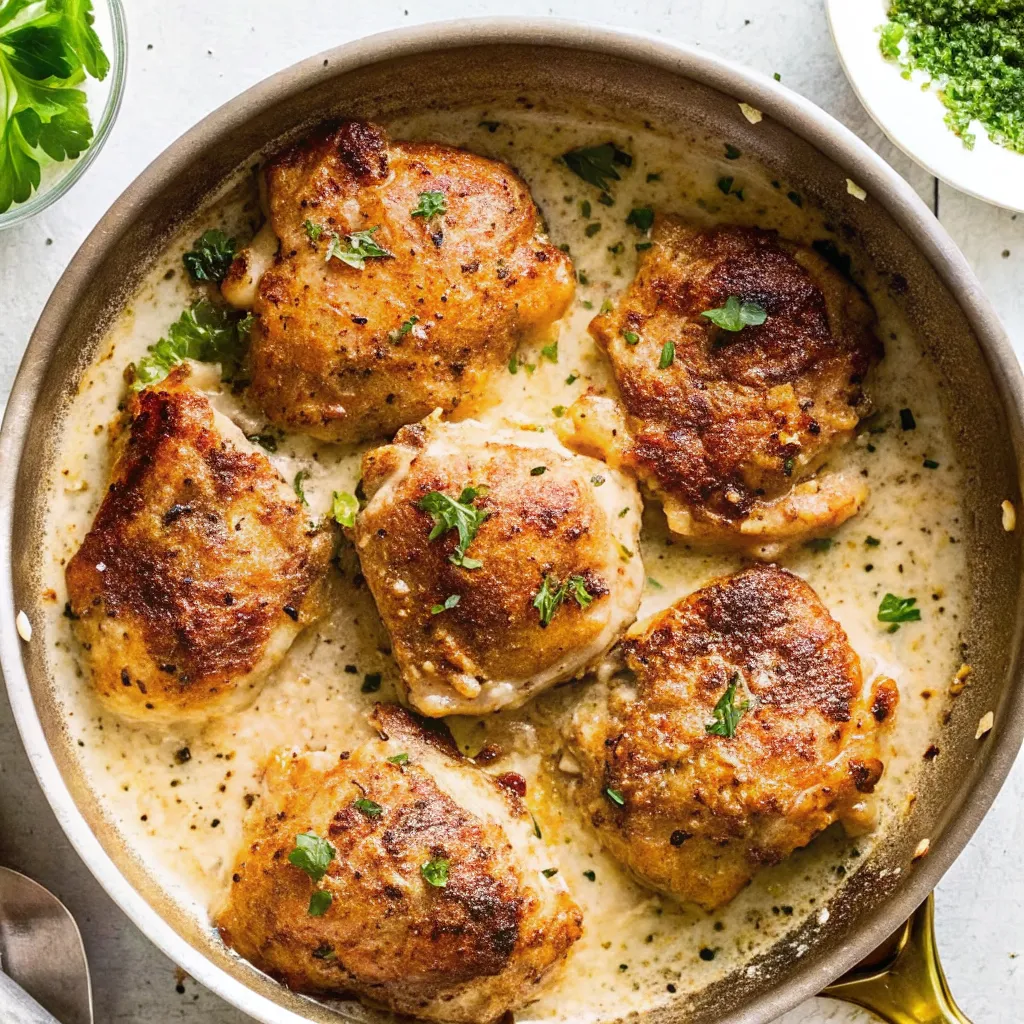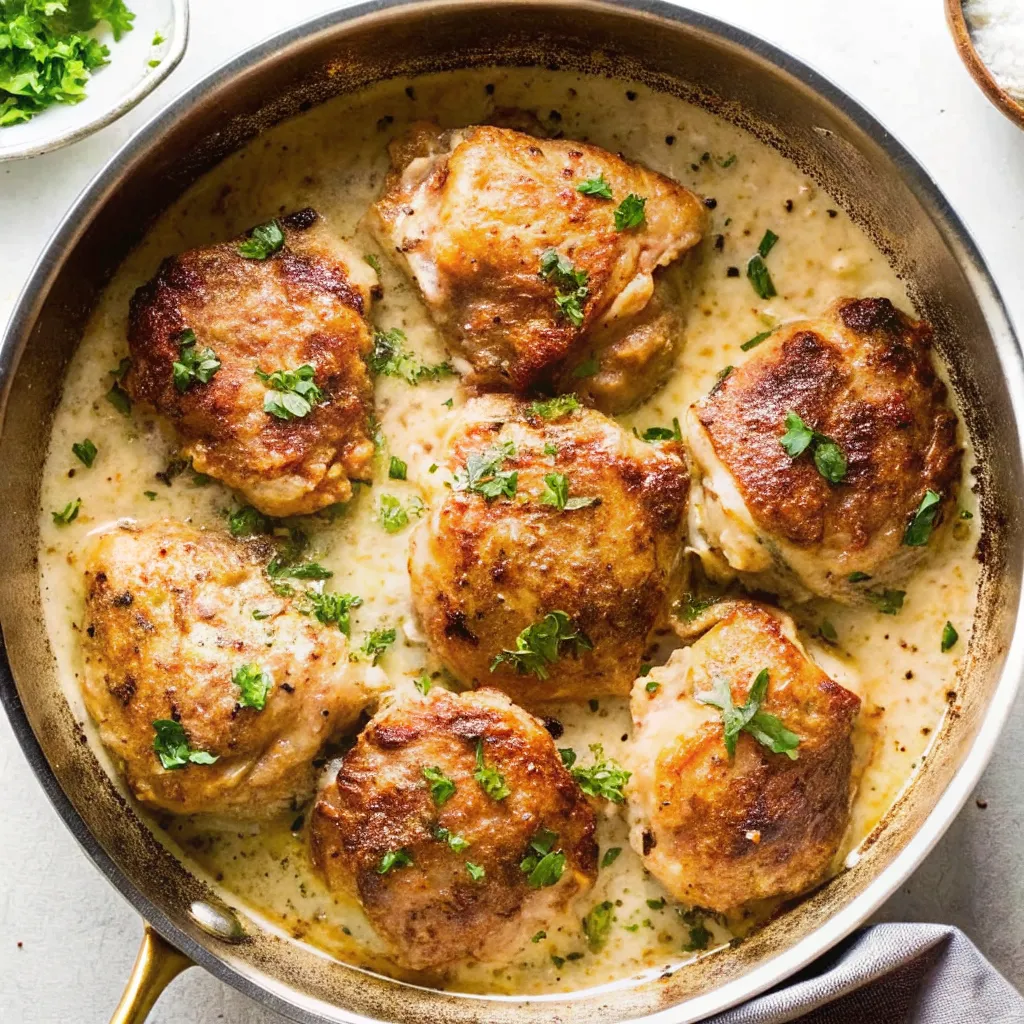The Magic of Cacio e Pepe Meets Tender Chicken
Cacio e Pepe Chicken takes the beloved flavors of the classic Roman pasta and applies them to perfectly cooked chicken for a meal that’s both comforting and elegant. This fusion dish brings together the sharp tanginess of Pecorino Romano cheese and the bold heat of freshly cracked black pepper—the two star players in traditional cacio e pepe—with juicy, tender chicken. The result is a meal that feels both familiar and fresh, perfect for weeknight dinners or special occasions alike.

What Exactly Is Cacio e Pepe Chicken?
At its heart, Cacio e Pepe Chicken is a beautiful example of culinary adaptation. The name comes directly from the famous Roman pasta dish “cacio e pepe,” which translates simply to “cheese and pepper.” These two humble ingredients create magic together in the original pasta version, and they work just as wonderfully with chicken.
The Secret to Perfect Cacio e Pepe Chicken
Creating truly exceptional Cacio e Pepe Chicken comes down to a few key techniques that make all the difference.
Choosing and Preparing Your Chicken
While you can make this dish with any cut of chicken, each requires slightly different handling:
- Chicken breasts: These can dry out easily, so consider pounding them to an even thickness before cooking. This ensures they cook evenly and stay juicy.
- Chicken thighs: Many chefs prefer thighs for their higher fat content and more forgiving nature when cooking. They stay moist and take on the cacio e pepe flavors beautifully.
- Whole chicken: For a showstopper meal, applying the cacio e pepe treatment to a whole roasted chicken creates a stunning presentation.
Whichever cut you choose, bringing the chicken to room temperature before cooking will help it cook more evenly.
The Cheese Selection Matters
The “cacio” part of the dish traditionally refers to Pecorino Romano, a sheep’s milk cheese with a sharp, salty profile that defines the dish. However, the type of Pecorino Romano you select can affect your final result:
- Aged Pecorino Romano: More firmly textured with concentrated flavor, perfect for grating over the finished dish.
- Younger Pecorino: Slightly creamier and milder, it melts beautifully into the sauce.
Variations on Cacio e Pepe Chicken
While the classic approach delivers amazing results, these variations offer delicious alternatives:
Cacio e Pepe Chicken Pasta

Combine the best of both worlds by slicing the prepared chicken and tossing it with pasta that’s also been coated in cacio e pepe sauce. This creates a complete meal with double the cacio e pepe goodness.
Crispy Cacio e Pepe Chicken Cutlets
For a textural twist, pound chicken breasts thin, dredge them in a mixture of flour, grated Pecorino, and plenty of black pepper, then pan-fry until crisp. The cheese in the coating creates an incredibly crispy, flavorful exterior.
Cacio e Pepe Chicken and Vegetables
Turn this into a one-pan meal by adding vegetables like asparagus, cherry tomatoes, or zucchini to the pan after removing the cooked chicken. Sauté them briefly, then proceed with making the sauce and return the chicken to the pan at the end.

What to Serve with Cacio e Pepe Chicken
The beauty of this dish lies partly in its versatility. Here are some perfect pairings:
Pasta Partnerships
Since cacio e pepe originated as a pasta dish, serving the chicken alongside or on top of pasta makes perfect sense. Consider:
- A simple spaghetti or bucatini dressed lightly with olive oil
- Fresh fettuccine with a little butter
- Orzo or small pasta shapes that can catch bits of the sauce
Vegetable Sides That Complement
The rich, cheesy pepper sauce pairs beautifully with slightly bitter or acidic vegetables:
- Roasted broccoli or broccolini
- Sautéed spinach with garlic
- Arugula salad with lemon dressing
- Roasted cherry tomatoes
Bread for Sauce-Soaking
The sauce is too good to waste, so serve with:
- Crusty Italian bread
- Garlic toast
- Homemade focaccia
Chicken Turning Out Dry
To ensure juicy results:
- Don’t overcook the chicken initially—it will continue cooking when returned to the sauce
- Use a meat thermometer to cook to just 165°F (74°C)
- Consider brining the chicken, especially breasts, for 30 minutes before cooking
Bland Results
If your dish lacks punch:
- Make sure you’re using enough freshly cracked pepper
- Use authentic Pecorino Romano, which has more flavor than domestic alternatives
- Season the chicken properly with salt before cooking
- Toast the pepper to bring out its aromatic oils
Health Benefits of Cacio e Pepe Chicken
While this dish feels like comfort food, it also offers some great benefits:
Protein-Rich
Chicken provides lean protein that helps build and maintain muscle. A single serving of Cacio e Pepe Chicken can offer 25+ grams of complete protein.
Calcium Boost
Thanks to the Pecorino Romano, you’re getting a good dose of calcium with each serving—great for bone health.
Black Pepper Benefits
The humble black pepper does more than add flavor. It contains piperine, which may help with:
- Better digestion
- Anti-inflammatory effects
- Enhanced absorption of other nutrients
Cacio E Pepe Chicken
Ingredients
- Ingredients
- 8 bone-in skin-on chicken thighs (about 4 1/2 lb.)
- Kosher salt to taste
- Freshly ground black pepper to taste
- 1 medium yellow onion chopped
- 3 cloves garlic finely chopped
- 1 cup dry white wine
- 1 ½ cups reduced-sodium chicken broth
- ½ cup heavy cream
- 1 lemon zested, cut into wedges
- 4 Tbsp. finely grated pecorino romano divided
- Chopped fresh parsley for serving
Instructions
- Preheat oven to 425°F. Season chicken all over with salt and pepper. Arrange chicken skin-side down in a large cold ovenproof skillet.
- Cook over medium heat, undisturbed, until skin is crispy and golden brown, about 15–20 minutes. Transfer chicken to a plate.
- In the same skillet over medium-high heat, cook onions with 1/4 tsp salt, scraping up browned bits, until softened, about 7 minutes.
- Add garlic; cook 1 minute until fragrant. Add wine and simmer until reduced by half, about 3 minutes. Stir in broth and bring to a simmer.
- Return chicken skin-side up to the skillet. Transfer to oven and bake uncovered for 30 minutes, until chicken is cooked through.
- Transfer chicken to a plate again. With a towel or mitt on the handle, return skillet to stovetop over medium-high heat.
- Add cream; bring to a boil. Reduce heat and simmer until slightly thickened, about 3 minutes.
- Stir in lemon zest, 1 Tbsp pecorino, and 1 tsp pepper. Season with salt if needed.
- Return chicken to skillet with any juices. Top with parsley, remaining pecorino, and extra black pepper. Serve with lemon wedges and more cheese if desired.
Notes
- Chicken Options: You can substitute bone-in chicken breasts or boneless thighs, but cooking time will vary. For boneless, reduce bake time by about 10 minutes.
- Wine Substitute: If you prefer not to cook with wine, use extra chicken broth with a splash of white wine vinegar or lemon juice to brighten the sauce.
- Cheese Tip: Use freshly grated pecorino romano for the best melt and sharp flavor. Avoid pre-shredded cheese, which doesn’t melt as smoothly.

